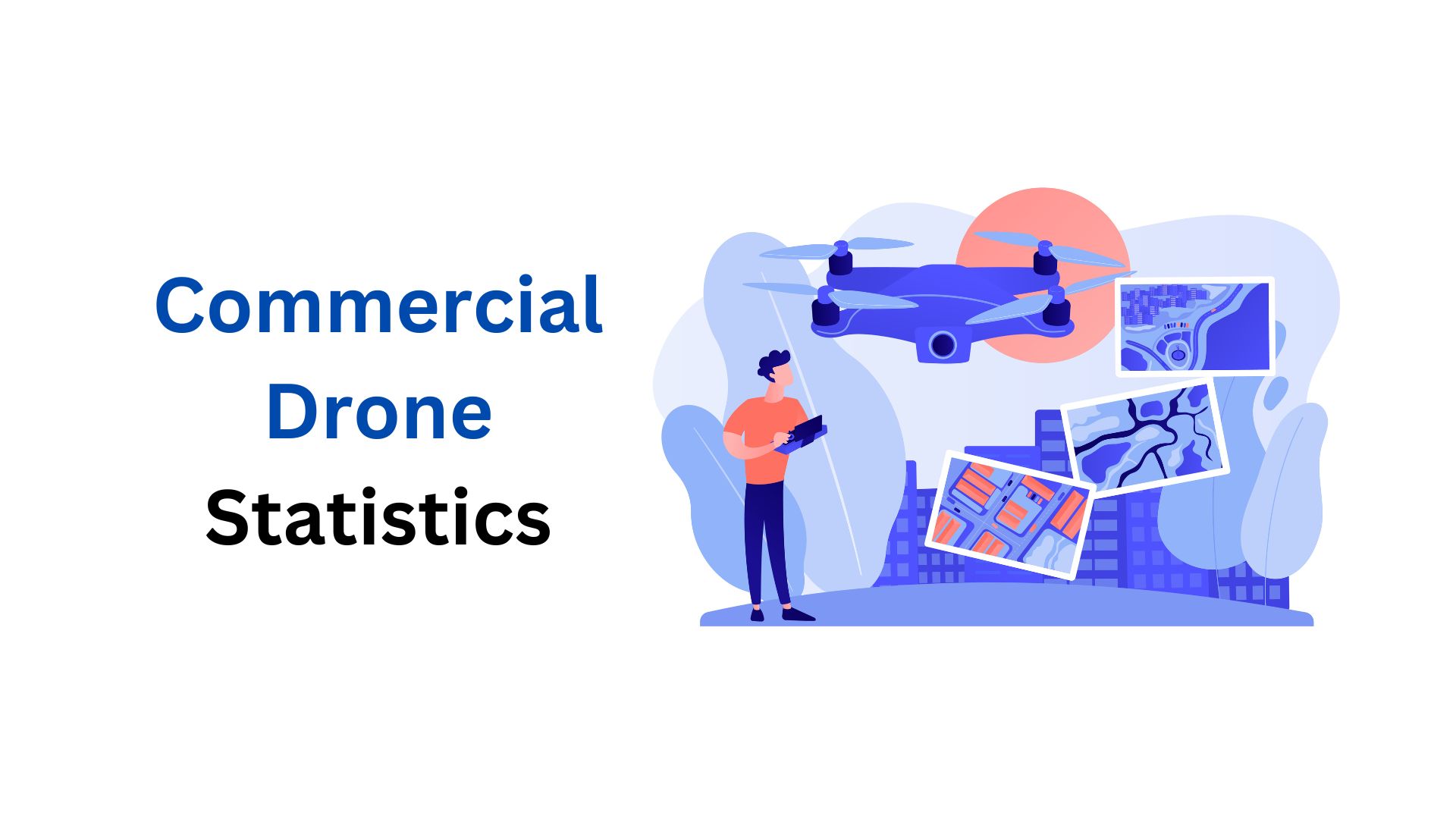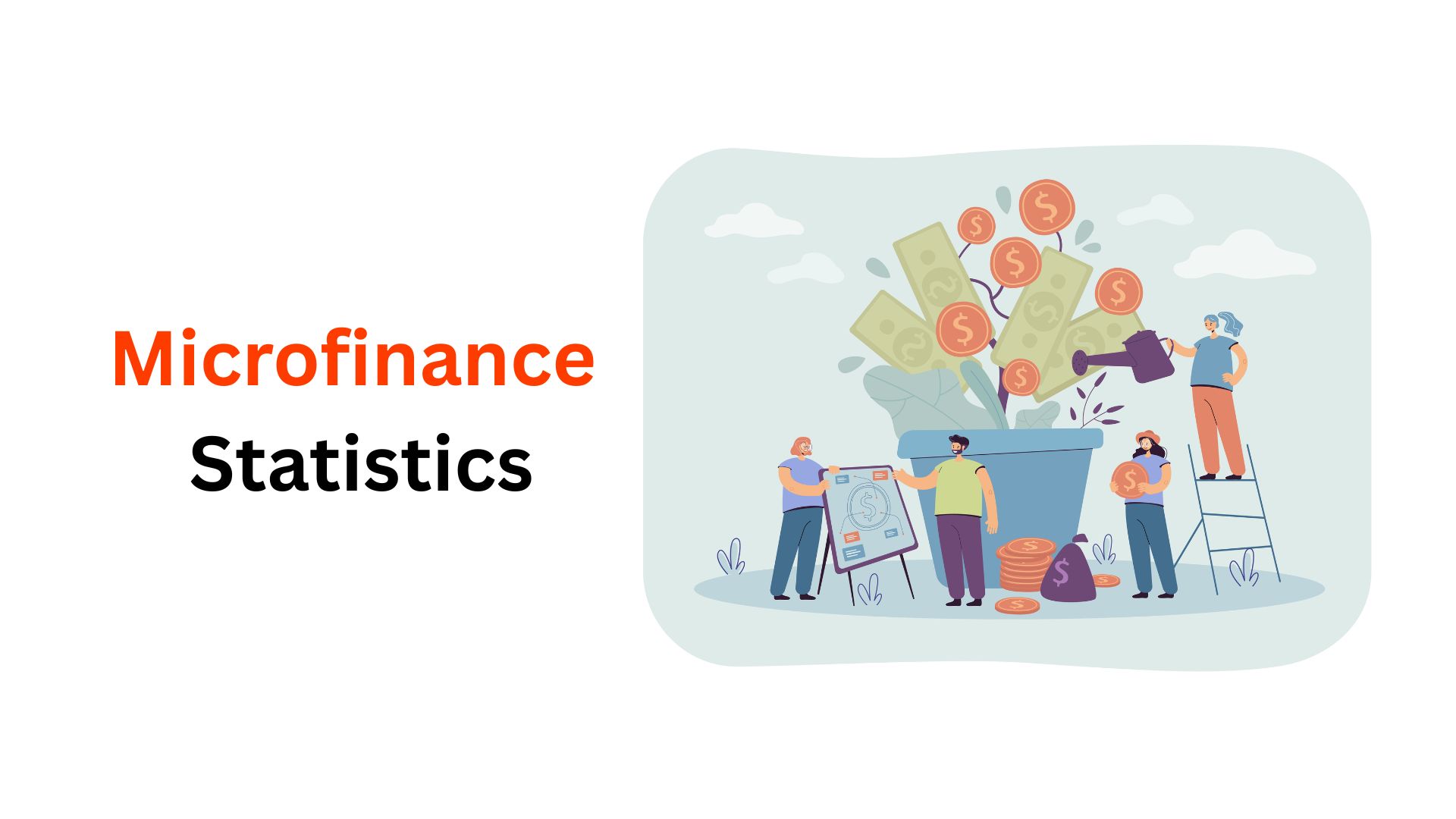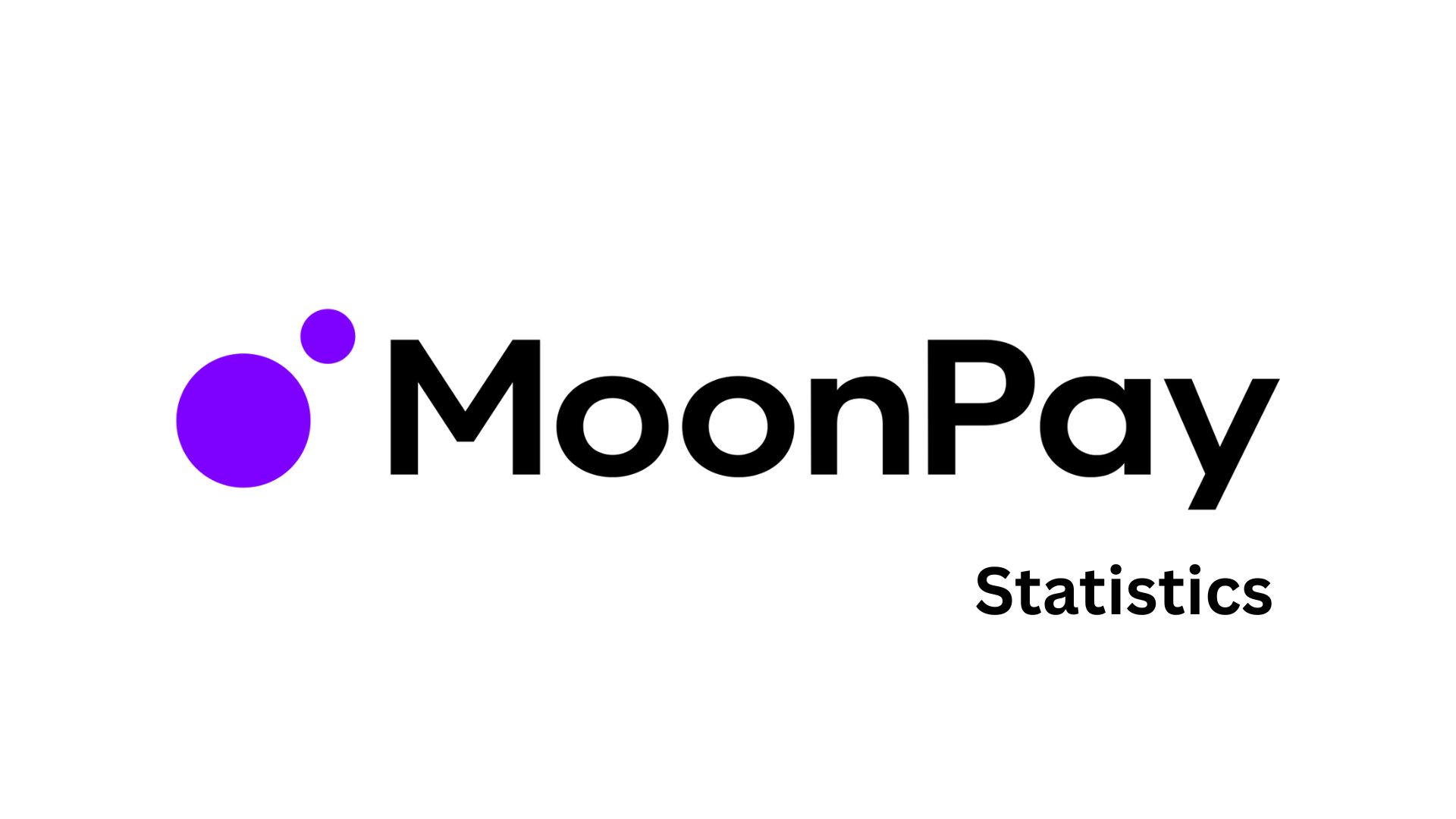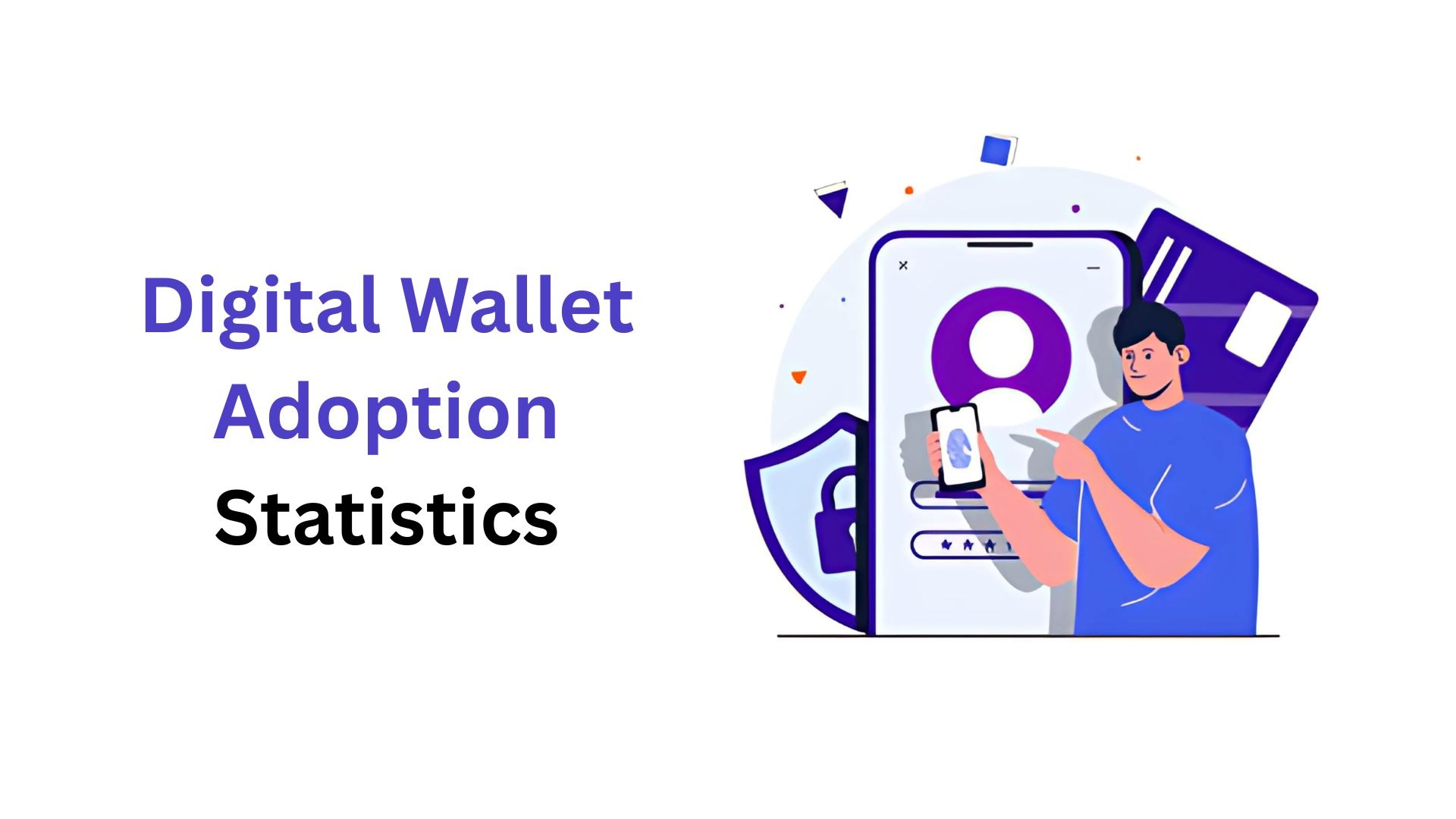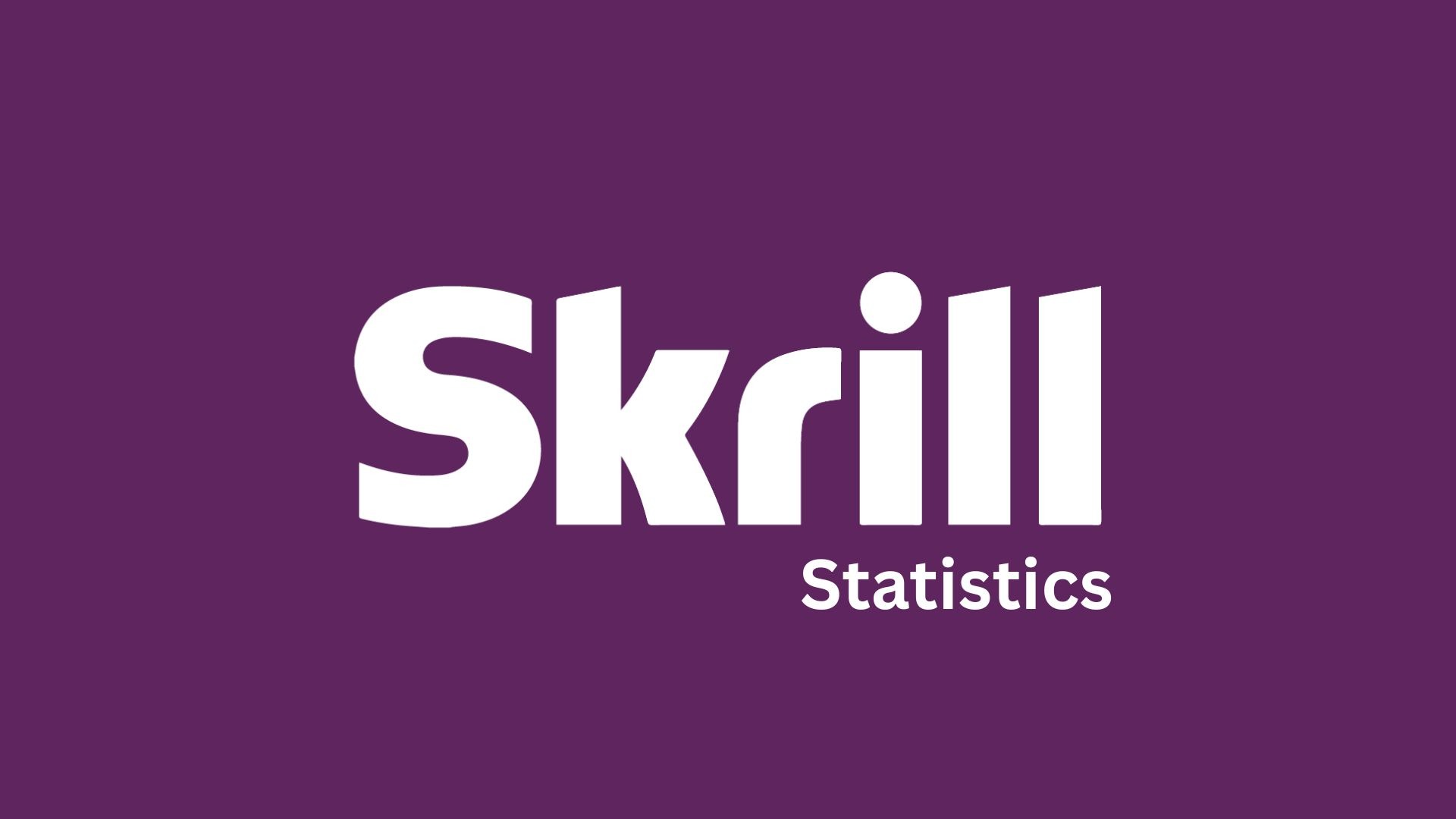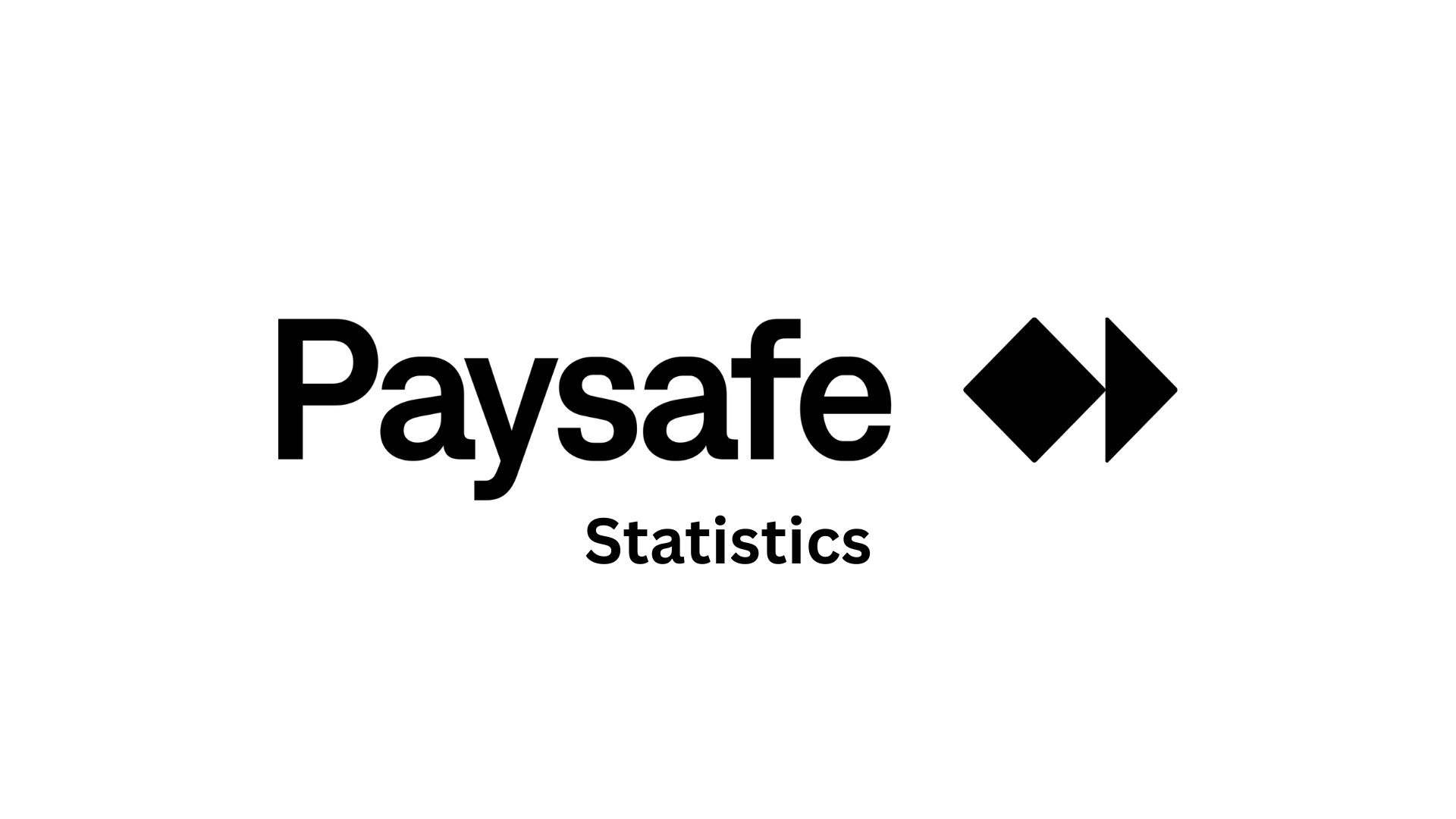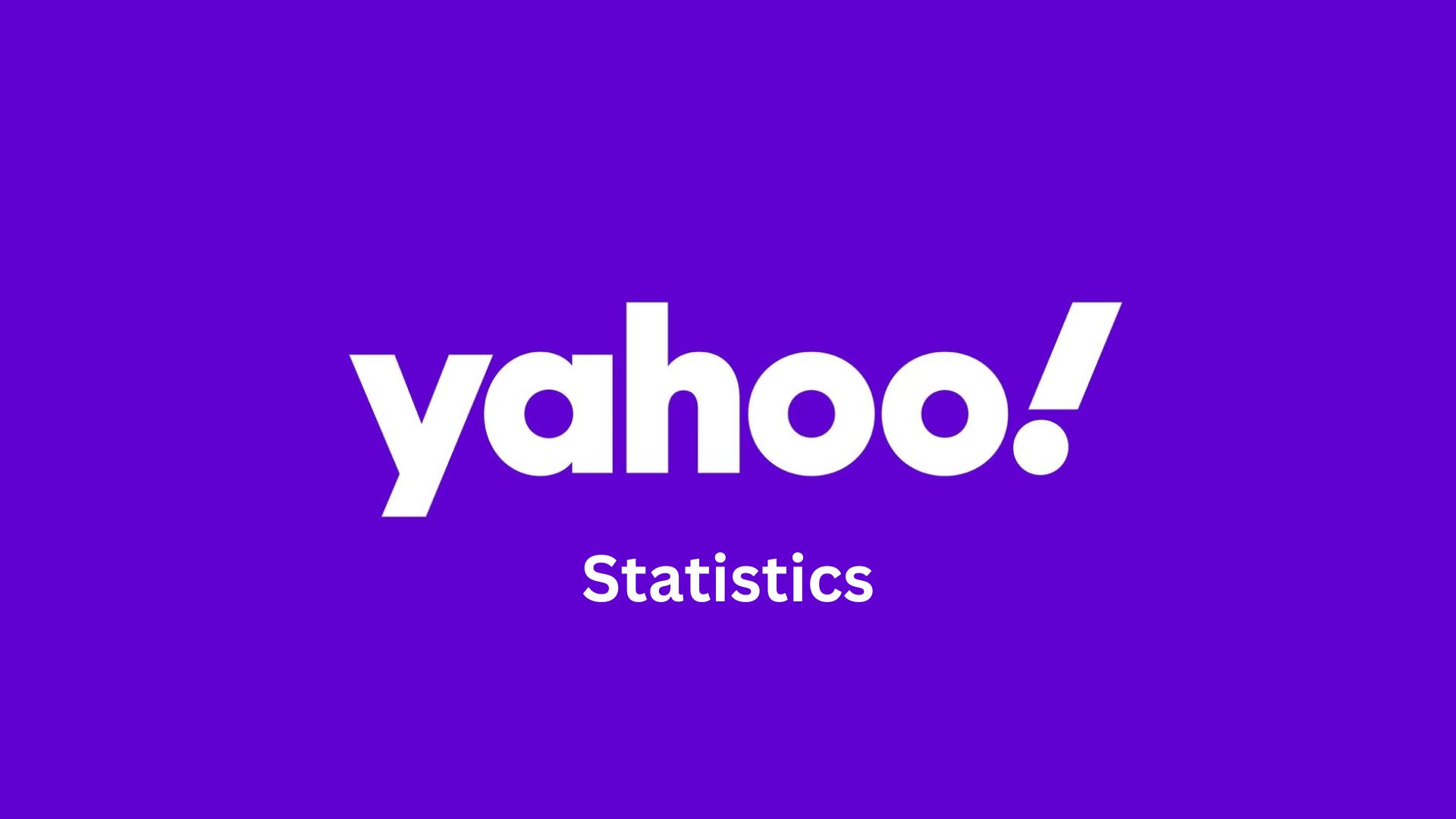AI-Powered Wearables Statistics By Market Size, Brands, Transformation, Environmental Impacts And Facts (2025)
Updated · Oct 24, 2025
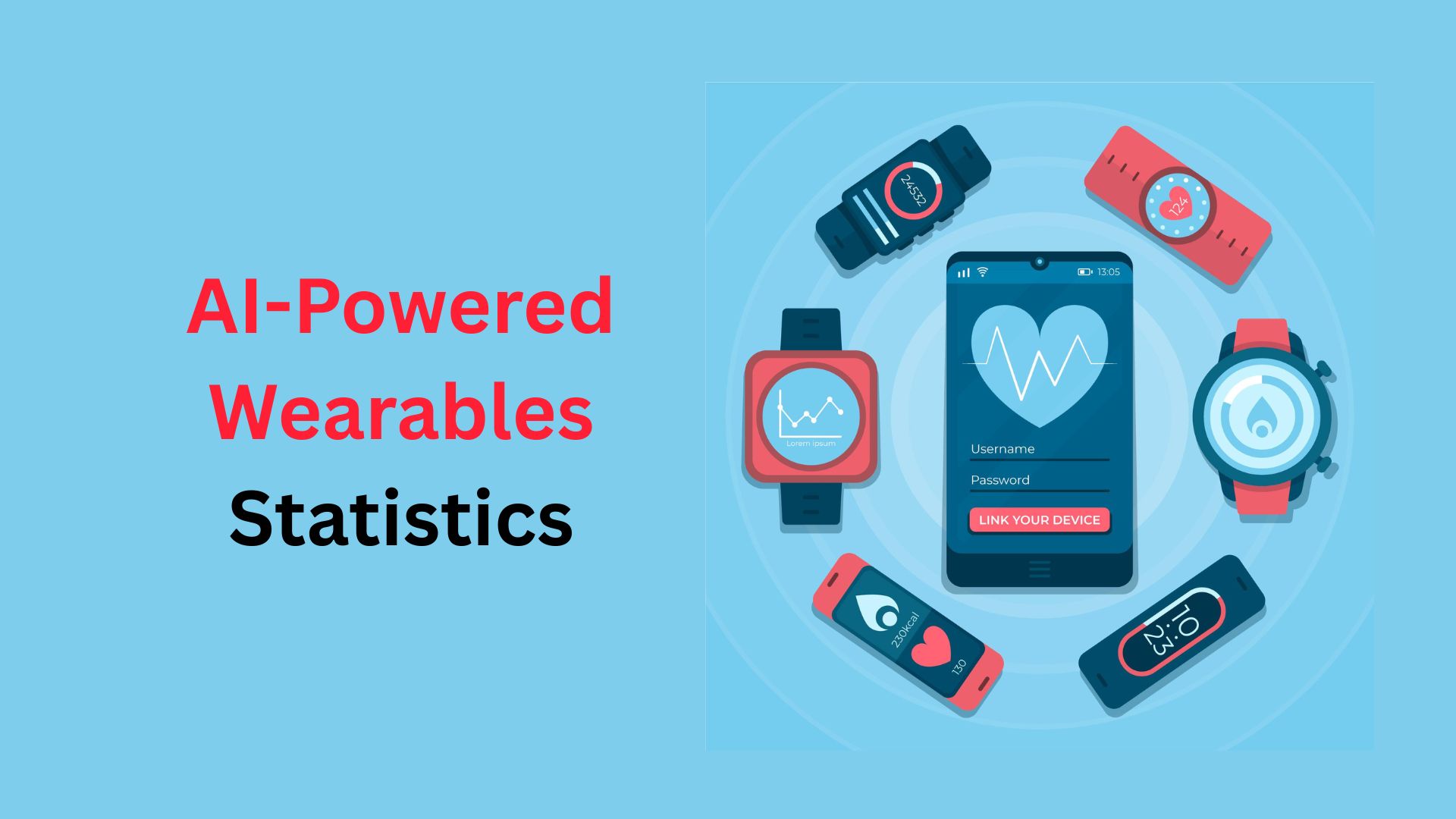
Table of Contents
Introduction
AI-Powered Wearables Statistics: AI is the new thing that is very discreetly and seamlessly infiltrating our dress code. AI-driven wearables are, however, slowly replacing merely tracking of physical activity and heart rate with accompanying personal, health, and safety tools—thus, we have smart rings, for instance, that indicate when it’s time for you to sleep, and even interpreters in the form of speech-acoustic sunglasses that do it instantly.
The year 2025 sees this market no longer being a niche but rather a fast-growing industry with real money, millions of devices, and clear signs that AI will change our lives, work, and health management. In this article, we will give you the latest and trending AI-Powered wearables statistics.
Editor’s Choice
- The worldwide market for AI wearables is expected to have a phenomenal growth from US$31.2 billion in 2023 to US$304.8 billion in 2033, at a CAGR of 25.6%.
- Healthcare is the sector that leads the AI wearable adoption, with an estimated 35% of adults using AI health devices in 2024.
- The quantity of AI-infused healthcare wearables will go from US$7.53 billion in 2023 to US$50.4 billion by 2030 (31.6% CAGR).
- Apple keeps on being the principal brand of wearables, restoring its 23.8% global market share in Q4 2024, followed by Xiaomi (11.8%), Huawei (8.2%), and Samsung (8%).
- On-device AI wearables contributed US$15.66 billion to the total revenue in 2023 and are expected to reach US$99.51 billion by 2030 (30.6% CAGR), thus surpassing cloud-based models due to their privacy and performance advantages.
- The main element in the AI wearables market is sensors, with a growth rate of 31.1% projected, the reason being the demand for accurate health tracking and biometric data analysis.
- Wearable devices powered by AI take the accuracy of health predictions to a whole new level of 23.8%, thereby facilitating health monitoring and early illness detection significantly.
- The consumer electronics segment is going to grow from US$8.62 billion in 2023 to US$52.07 billion by 2030 (29.7% CAGR), indicating the acceptance of technology in lifestyle to a wide extent.
- The military and defence segments will be using AI for performance and safety monitoring and are thus expected to be a US$21.59 billion market by 2030 (30.9% CAGR).
General Facts
- In 2023, the consumer electronics sector was the largest contributor to the wearable AI market, accounting for more than one-third of the total market.
- The main reason for this was the high demand for smartwatches, fitness trackers, earbuds, and other AI-powered devices that people use throughout the day.
- The healthcare sector, on the other hand, consumed about 32.2% of the wearable AI technology market in 2023.
- By the year 2024, the total number of AI-based wearable devices globally is expected to cross the 1 billion mark, according to industry experts, which indicates their deep-rooted presence in daily life.
- Moreover, it is projected that around one-fourth of all wearable devices will include emotion AI technology by 2023, thus giving them the ability to recognise emotional states and help in the area of mental health monitoring.
- It is also expected that by 2024, up to 30% of consumer wearable devices will be equipped with on-device AI capabilities, which means data processing will occur directly on the device instead of being sent to the cloud.
- The use of AI in healthcare wearables is considered to be the most promising application for the technology, with estimates that it might boost disease diagnosis precision by over 20% by the year 2024.
- The consumers’ adoption of the technology is strong; for instance, in the US, more than 20% of the population relies on fitness trackers or smartwatches to monitor their health regularly, and approximately 41% of the population uses wearable technology in some form.
- The global market for health wearables reflects the same trend, with its sales rising from 223 million units in 2019 to a forecasted 300 million units by the end of 2023.
- Among the gadgets, smartwatches took the lead in 2022, representing roughly 57% of the market for AI wearable technology.
- Apple Watch, within this category, was recognised as the unquestionable winner, enjoying a 36.1% global share.
- This position indicates Apple’s persistent strength in the market through its technology that combines AI-driven services such as ECG monitoring, fall detection, and health insights with an attractive design and considerable brand loyalty.
Top 5 Wearable Brands Companies
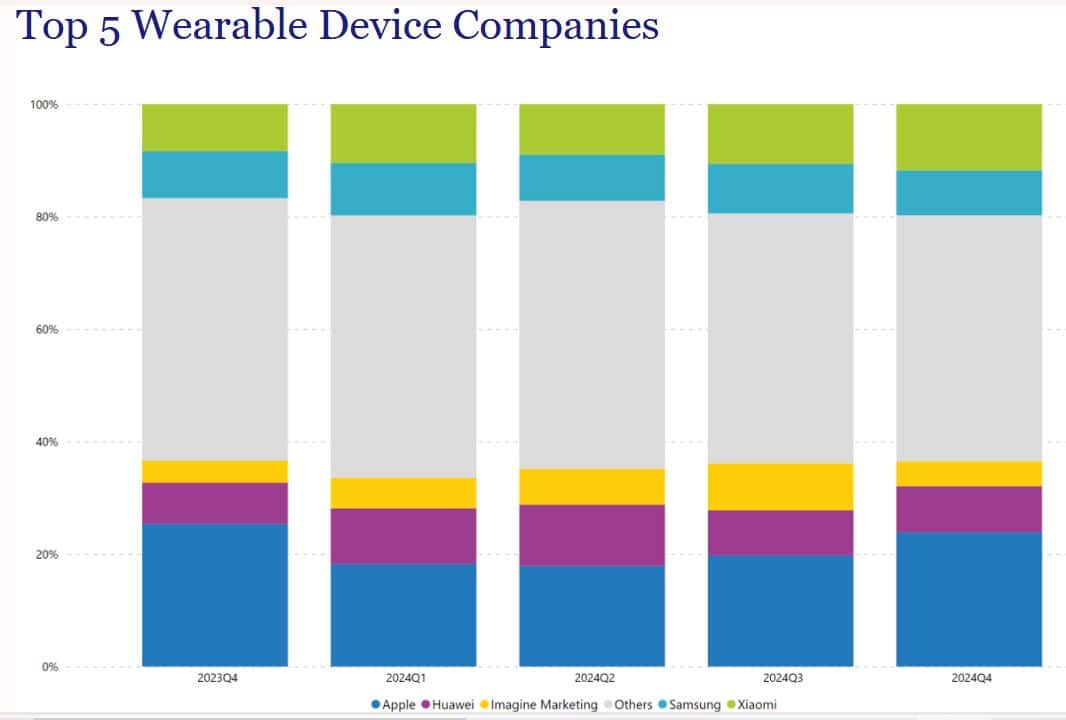
(Source: idc.com)
- As per the IDC report, AI-Powered Wearables Statistics show that the depicted data illustrates the fluctuation of the market shares belonging to the top wearable brands from late 2023 till the end of 2024.
- During the last quarter of 2023, Apple was the king of the global wearable market, with a share of 25.3% which it successfully kept through 2024.
- Huawei ranked second, followed by Samsung and Xiaomi; the trio managed to share the market between 7% and 8.4% while Imagine Marketing (the parent company of boAt, a major Indian wearable brand) took 3.9%.
- The rest of the market was divided into smaller brands occupying a total of 46.7%.
- However, the first quarter of 2024 saw a sharp decline in Apple’s share of the market to 18.2%; at the same time, Huawei accelerated to 9.9%.
- Imagine Marketing climbed up to 5.4% and all three were pulling strong in the emerging markets.
- Though Samsung and Xiaomi received slight increases to 9.3% and 10.4% respectively, and the “Others” category was unchanged at 46.7%.
- In the second quarter of 2024, Apple’s market share went down marginally again to 17.9%.
- Samsung’s share was Huqvva by slightly to 8.2% and consequently, the small brands’ market share increased to 47.7% thus revealing competition and fragmentation in the market.
- In the third quarter of 2024, Apple captured some more sales with an increase to 19.7%, whereas Huawei’s share was reduced to 8.1%. The market presence of Imagine Marketing increased again to 8.3%, creating one of its best quarters. Samsung slightly upsurged to 8.8%, while Xiaomi went up to 10.6%.
- The “Others” group was down to 44.5% implying that the leading brands were increasingly taking up the total market.
- Apple’s powerful resurgence occurred in the fourth quarter of 2024, which solidified its position as the number one provider with a market share increase to 23.8%. This rise can be attributed to either the innovative product launches or the holiday season.
- Huawei, on the other hand, was unshaken at a stable 8.2%, while the market share of Imagine Marketing was cut down to 4.4%after a vigorous mid-year stage.
- In the same period, Samsung maintained an uninterrupted presence at 8.0% and Xiaomi reached its highest ever market share of the year at 11.8%.
- The total market proportion of all the smaller brands suffered a slight decline, reaching only 43.8%.
AI-Powered Wearables – Transformation of Health And Wellness
- AI-wearable devices are no longer just trackers but rather the ones that will always provide the user with health insights and recommend the ones that have to be taken to achieve a better state of well-being.
- These days, the devices are effectively doing more than just counting the steps made or monitoring the sleep cycles; they are using AI for analysing the complex biometrics of the user instantly and giving health insights tailored to his/her needs.
- For instance, a study has shown that when one combines the AI with the data from a wearable device, the health prediction accuracy is increased up to 23.8%, which definitely makes the tracker a more effective way than the conventional one.
- The most recent study from MIT and Google indicates that large language models (LLMs) can be trained using data from wearables.
- The LLMs consider not only physiological data such as resting heart rate and sleep duration but also contextual factors like age, lifestyle, and overall health background.
- Such a mix lets AI systems make healthier and more accurate person-specific predictions about the individual’s health condition.
- With such advanced knowledge, AI-enabled wearables are now able to monitor the user’s health and determine if there’s an issue, suggest what changes in the user’s lifestyle might help, and, in case of emergencies, even alert the physician.
- They are no longer just tracking the illness but also taking an active part in preventing it.
- Oura is a name that comes to mind when thinking about cutting-edge technology in healthcare.
- The wearable ring from Oura is equipped with sensors that can monitor and log more than twenty bodily functions, focusing on the quality of sleep, physical activity, emotional stress, and heart condition, among others.
- The Oura Ring processes continuous data flow into valuable suggestions through which the users learn what their body requires to be in a state of balance and health.
Global AI Wearable Market
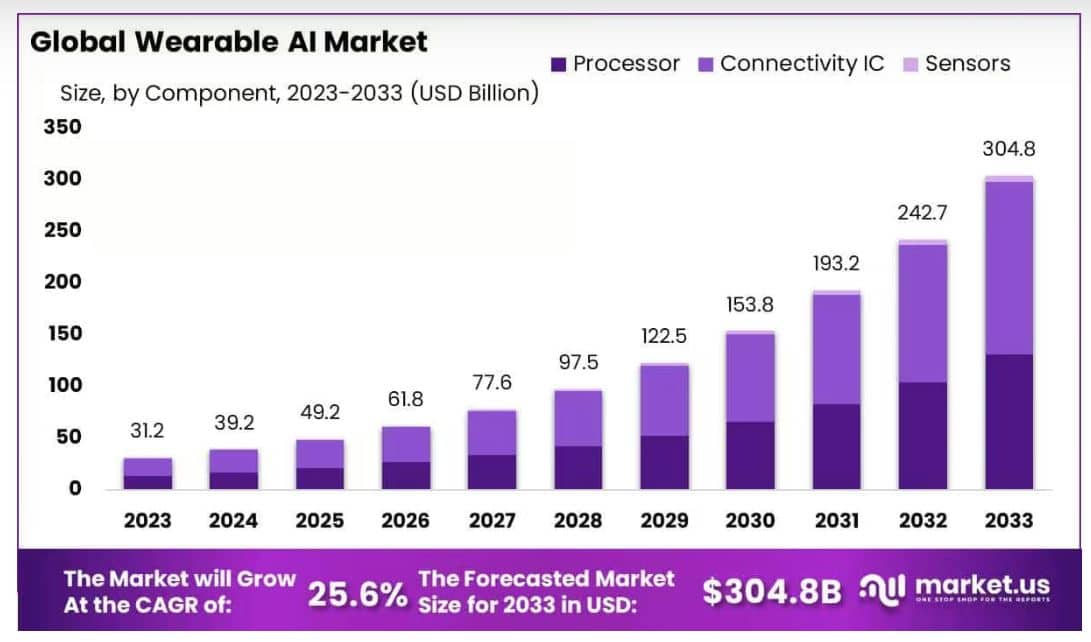
(Source: market.us)
- TAs per the Market.us report, AI-Powered Wearables statistics state that the global market for AI wearables is experiencing a rapid expansion and is expected to increase from US$31.2 billion in 2023 to US$304.8 billion by 2033.
- The compound annual growth rate (CAGR) of 25.6% indicates that the sector is rapidly expanding each year.
- One of the factors that leads to the mentioned growth is the rising number of artificial intelligence applications in smart devices such as watches, rings, glasses, and fitness trackers.
- These technologies are becoming increasingly competent; their use of artificial intelligence enables them to keep track of health, process fitness data, and even suggest actions on the spot.
- Among others, health tracking, smart assistants, and individualised AI services are the factors that contribute considerably to the rise in demand.
By Geography
- According to Globenewswire, the wearable AI market in North America is projected to grow at a 27.8% CAGR from 2024 to 2031.
- By 2031, the United States is expected to lead the region with a market size of USD 43.63 billion.
- As per Grandview Research, the U.S. AI wearables market earned USD 6,095.7 million in 2023 and is forecasted to reach USD 39,041.1 million by 2030.
- The overall U.S. market is likely to expand at a 30.4% CAGR between 2024 and 2030, reflecting steady technological and consumer adoption growth.
Furthermore, the estimated market values and growth rates of other countries and regions are presented in the table below.
| Country | Market Size, 2030 (USD million) | CAGR (2024 to 2030) |
| Canada | 6,970.8 | 28.1% |
| Germany | 8,483.4 | 29.9% |
| France | 6,684.9 | 31.6% |
| Italy | 4,561.9 | 30.5% |
| Spain | 3,947.8 | 29.9% |
| Denmark | 1,631.8 | 30.8% |
| Sweden | 1,491.4 | 29.7% |
| Norway | 1,601.1 | 30.9% |
| Japan | 15,576.2 | 29.4% |
| China | 15,153.9 | 30.9% |
| India | 12,037.6 | 31.2% |
| Australia | 3,442.4 | 30.8% |
| South Korea | 2,592.5 | 31.4% |
| Thailand | 1,796.0 | 31.1% |
| Mexico | 3,250.8 | 26.5% |
| Brazil | 5,410.4 | 25.4% |
| South Africa | 2,111.0 | 30.5% |
| Saudi Arabia | 891.5 | 29.2% |
| UK | 12,053.9 | 31% |
| Argentina | 1,376.7 | 25.5% |
| UAE | 667.3 | 30.2% |
| Kuwait | 446.6 | 30.2% |
| Region | Market Size, 2030 (USD million) | CAGR (2024 to 2030) |
| Latin America | 14,416.2 | 25.7% |
| Europe | 43,864.4 | 30.3% |
| North America | 46,011.8 | 30% |
| Middle East & Africa | 8,722.9 | 29.7% |
| Asia Pacific | 53,453.0 | 30.4% |
By Industry
- The data illustrates the rising trend and market valuation of wearable devices powered by AI technology in several industries, with the healthcare sector being one of the principal contributors.
- As per CIO Business World, by the year 2024, approximately 35% of the adult population would have been using at least one device powered by AI for the purpose of healthcare.
- These devices consist of smartwatches, rings, and patches that monitor vital signs, sleep, and other health metrics.
- A survey by Scoop.market.us in January 2025 revealed that 10.2% of the population between the ages of 18 to 34 is using AI-based healthcare devices regularly, which is an indication of strong adoption among the younger and more tech-savvy users.
- Notably, the majority of wearable users, i.e., 78.4%, express their readiness to provide their data to the healthcare sector for the sake of better medical care.
- However, only about a quarter, or exactly 26.5%, have actually shared their information in this manner.
- In consumer electronics, the market is predicted to undergo a staggering transformation from US$8,624.4 million in 2023 to US$52,074.7 million by 2030, with a 29.7% CAGR.
- Among these are the daily devices like smartwatches, earbuds, and fitness trackers which employ AI for activity tracking, voice assistance, and personalised recommendations.
- Furthermore, the automotive industry is becoming increasingly remarkable as a segment that is growing fast, and the AI wearable devices contribute positively towards the safety of drivers, fatigue detection, and connectivity.
- The expected rise in market valuation from US$2,346.7 million in 2023 to US$12,757.5 million by 2030 is at a rate of 27.7% CAGR.
- The military and defence industries, on the other hand, are using AI-powered wearables for monitoring and tracking the health, stress levels, and performance of soldiers in real-time.
- This sector is poised for a huge leap and will reach a whopping US$21,593.6 million by 2030 with a 30.9% CAGR, as troops worldwide rely on cutting-edge biometric and situational awareness systems.
The table below shows additional AI-powered wearables market statistics by industry:
| Industry | Market Revenue (USD million) | CAGR (2024 to 2030) | |
| 2023 | 2030 | ||
| Consumer Electronics | 8,624.4 | 52,074.7 | 29.7% |
| Automotive | 2,346.7 | 12,757.5 | 27.7% |
| Military & Defense | 3,350 | 21,593.6 | 30.9% |
| Media & Entertainment | 965.8 | 6,157 | 30.7% |
By Operation
- As per Grand View Research, the valuation of the global AI-powered wearables market was around US$26.88 billion in 2023, and its gradually growing figure will be accompanied by a strong expansion with a compound annual growth rate (CAGR) of 29.8% through 2030.
- The main reason for this accelerated growth is the adoption of AI-powered devices, mainly in health, fitness, and lifestyle areas, as users want their wearables to be more personalised.
- In this particular market, on-device AI wearables, which process data locally and do not depend on cloud servers, were responsible for about US$15.66 billion in revenue in 2023.
- This market is expected to grow to an astonishing US$99.51 billion by the year 2030, with a remarkable annual growth rate of 30.6% starting in 2024.
- The increase in the use of on-device AI is a result of the combination of advanced processors and AI chips that make possible high data privacy, low latency, and great performance efficiency.
- On the other hand, wearables that are entirely reliant on the cloud for AI are forecasted to earn US$11.22 billion for year 2023, and then climb up to US$66.96 billion by 2030, with a CAGR of 29.5%.
- Such devices have continuous algorithm updates for analysing data and delivering insights based on cloud computing, thereby getting full support from powerful and remote servers.
- The two segments, about the coexistence standpoint, are predicted to mutually survive, with on-device AI getting a small edge in line with the increasing demand for privacy, low-latency experiences.
By Component
| Type | Market Revenue (USD million) | CAGR (2024 to 2030) | |
| 2023 | 2030 | ||
| Processor | 4,387.2 | 25,537.8 | 29% |
| Connectivity IC | 7,765.5 | 44,908.5 | 28.9% |
| Sensors | 14,727.1 | 96,022.0 | 31.1% |
- Looking at the whole product lineup, it can be pointed out that sensors hold the largest part of the AI-powered wearables market, and the latter is expected to grow at the fastest rate of 31.1%.
- The vital metrics that are monitored by these sensors include heart rate, blood oxygen, movement, temperature, and stress indicators, which will then be subjected to AI algorithms for personalised insights.
- Connectivity ICs (integrated circuits) are another important component, making a data exchange between the device and connected apps or cloud systems possible, with a growth rate of 28.9%.
- Processors are the parts that are in charge of AI computations, and they are forecasted to grow at a rate of 29%, fueled by the evolution of efficient low-power chips that are specifically designed for AI and edge computing.
Challenges And Risks
- AI-enabled wearables have to cope with a lot of issues that are still very important to bring up despite their innovative and rapid growth.
- One of the major concerns coming up is about privacy and data protection.
- The collection of personal information that is very sensitive, like heart rate, sleep patterns, stress levels, and location data, is always going on for these devices.
- The fact that they depend on sensors that are always on and transmitting data constantly increases the chances of data misuse or unauthorised access.
- Regulators and consumers have teamed up and are thus pushing companies to come up with stronger data protection laws and better security measures.
- The next problem is related to regulatory approval, keeping in mind especially the case of wearables having medical or clinical features.
- Those devices that claim to detect diseases, measure vital signs, or even give health advice have to go through lots of strict approval processes and clinical trials that take quite a long time to be carried out. Running state-of-the-art AI models on small wearable devices is a huge technical challenge due to the limited battery capacity and processing power.
- Keeping the battery from draining is a key engineering challenge that the companies have to confront while also rolling out strong performance.
- Therefore, significant investments are being made by the companies in on-device AI chips and efficient algorithms to deliver powerful results with minimum energy use.
- A report by Grand View Research indicated that the innovations are aiding the market in fast growth, but still balancing AI performance with long battery life remains as one of the toughest technical challenges in the wearable industry.
Environmental Impacts
- According to the International Energy Agency (IEA), global data centers that support AI and IoT devices — including wearables — consumed about 205 terawatt-hours (TWh) of electricity in 2022, representing nearly 1% of total global power use.
- AI wearables usually operate on low energy, using only 0.5 to 2 watts of power when active.
- As stated by Sciencedirect (2024), computing power required for AI is expected to increase three to five times within the next five years.
- Harvard Business Review estimated in 2025 that AI systems could generate between 1.2 and 5 million tons of extra electronic waste by 2030.
- Most AI-powered wearable devices are replaced every 2 to 3 years, leading to a short product lifespan and higher environmental impact.
Conclusion
AI-Powered Wearables Statistics: The usage of AI-enabled wearables is altering the monitoring and management of our health and daily life improvement. The global market is predicted to grow from US$31.2 billion in 2023 to US$304.8 billion by 2033; thus, these devices are not only considered to be gadgets but are actually becoming indispensable companions for health, fitness, and smart assistance.
The introduction of technologies such as on-device AI, emotion detection, and sophisticated sensors is making wearables more intelligent and tailored to individual users. Although there are still issues related to privacy, regulations, and battery life, there is a growing adoption of AI wearables in healthcare, consumer electronics, military, and other sectors, indicating the great potential of AI wearables in 2025 and beyond.
Sources
FAQ.
The valuation of the global AI wearable market was US$31.2 billion in the year 2023 and is anticipated to reach US$304.8 billion by 2033, with a CAGR of 25.6% which would be mainly from the healthcare, fitness, and lifestyle applications sector.
Health care is the main area of deployment, with 35% of the population using AI health devices by 2024; the rest of the sectors are consumer electronics, military, automotive, and media. These devices are being employed for health monitoring, security, and providing immersive experiences.
Apple is the giant in the market, commanding 23.8% in Q4 2024, with Xiaomi (11.8%), Huawei (8.2%), Samsung (8%), and mini-brands making up the rest of the market.
On-device AI wearables analyse the data on the spot, which enhances privacy, speed, and efficiency, and generated US$15.66 billion in revenue in 2023, while cloud-based wearables depend on servers for processing; therefore, their revenue is US$11.22 billion in the same year. Both segments are predicted to have rapid growth.
Privacy concerns, getting the nod from regulation for health benefits and limited battery life are amongst the challenges that are faced. These issues are being tackled through the use of efficient AI chips, secure data practices, and optimised device performance by companies.

I hold an MBA in Finance and Marketing, bringing a unique blend of business acumen and creative communication skills. With experience as a content in crafting statistical and research-backed content across multiple domains, including education, technology, product reviews, and company website analytics, I specialize in producing engaging, informative, and SEO-optimized content tailored to diverse audiences. My work bridges technical accuracy with compelling storytelling, helping brands educate, inform, and connect with their target markets.


